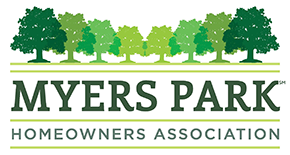History - Historic Preservation Tax Credit

Federal and State Historic Preservation Tax Credits
Income tax incentives for the rehabilitation of historic structures are important tools for historic preservation and economic development in North Carolina. A federal income tax credit for the rehabilitation of historic structures first appeared in 1976 and today consists of a 20% credit for the qualifying rehabilitation of income-producing historic properties. Since 1998 North Carolina has provided a 20% credit for those taxpayers who receive the federal credit, providing investors with a combined 40% credit against eligible project costs. In addition, the state provides a30% credit for the rehabilitation of nonincome-producing historic properties, including private residences. New State Mill Rehabilitation Tax Credits provide even greater credit amounts for qualifying former industrial sites. Since 1976, over 2,000 completed “certified rehabilitation” projects have been reviewed by the N.C. State Historic Preservation Office, representing over one billion dollars of investment in historic properties. The spinoff from all this activity includes job creation, downtown and neighborhood revitalization, improved community appearance, and greater community pride. Historic preservation is smart growth, and smart investment.
The Restoration Services Branch of the State Historic Preservation Office reviews and provides technical assistance to all preservation tax credit projects, both state and federal. For copies of tax credit applications and instructions, contact either Tim Simmons (tim.simmons@ncdcr.gov), 919-807-6585, or David Christenbury (david.christenbury@ncdcr.gov), 919-807-6574, and provide your name, address, and name and location of your project.
North Carolina Historic Preservation Tax Credits took effect January 1, 1998. The law increased the existing state credit for certified rehabilitations of income-producing historic property from 5% to 20% and for the first time provided a 30% credit for certified rehabilitations of nonincome-producing historic structures, including private residences.
Examples of Photographs to be submitted with your State Residential/Homeowner Historic Rehabilitation Tax Credit Application
State Mill Rehabilitation Tax Credits. The “mills bill” (G.S. 105 -229.70-75), prompted by the closure of many textile, tobacco, and furniture plants during the past decade, provides even greater state tax incentives for the rehabilitation of qualifying former industrial sites. These credits vary depending on the economic development tier of the county, and are available in lieu of (not in addition to) the standard state rehabilitation tax credits.
The Economic Impact of the Rehabilitation Investment Tax Credit Program in North Carolina. Reviews the contributions of preservation investment tax credits to economic development in North Carolina.
The Federal Historic Rehabilitation Investment Tax Credit: Frequently Asked Questions. Summarizes the scope and requirements of the federal investment tax credit program.
The Secretary of the Interior’s Standards for Rehabilitation. These are the “ten commandments” for guidance in rehabilitating historic structures. A rehabilitation must meet these standards to qualify as a “certified rehabilitation” for the purposes of both federal and state tax credits.
Link to Federal Historic Preservation Tax Credits, posted by the National Park Service. Includes illustrated guidelines for rehabilitating historic buildings.
1/9/2013
N.C. State Historic Preservation Office Home Page
Office of Archives and History Home Page
